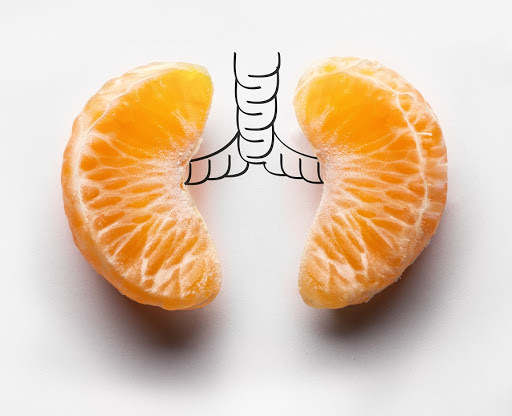Our lungs do a lot for us. Even though most of us don’t think of the lungs as something we can exercise, it’s possible to take steps to help them work better.
The air we breathe can be contaminated with many kinds of pollutants. Everything from pollen, to chemicals, to secondhand smoke can be trapped in the air and enter our lungs.

Sponsored Links
Our lungs are mostly a self-cleaning organ, but there are certain things you can do to help them function at the optimal level. A lung cleanse may be helpful for individuals who have a health condition that causes breathing difficulties, such as asthma, COPD, or cystic fibrosis.The human body demonstrates an amazing ability to promote the healing of itself, and the lungs are no exception. However, long-term inhalation of smoke, smog or other harmful substances can overcome the lungs’ ability to flush themselves clean.
There are many ways you can practice a lung cleanse, including making lifestyle changes and performing exercises to help drain the lungs of fluid. Here’s the complete list of five tips for keeping your lungs clean.
1.Stop smoking!

If you have been a long-term smoker—of anything, be it cigarettes, a pipe, or marijuana—your lungs are scarred. Tobacco smoke in particular contains carbon monoxide (poison), tar (gums up those little air sacs we need to breathe), and a plethora of additives Big Tobacco has so infamously added to keep smokers smoking (more poison).
Smoking tobacco is one of the leading causes of chronic obstructive pulmonary disease (COPD). Smoking can also cause emphysema and lung cancer. The toxins from cigarettes can cause damaging inflammation in the bronchus, making it difficult to breathe.
New studies have found that some companies use a flavouring in e-cigarettes which comes from a toxic chemical called Diacetyl. This chemical has been linked to constrictive bronchiolitis, a rare and life-threatening form of non-reversible obstructive lung disease in which the bronchioles are compressed and narrowed by scar tissue and/or inflammation.
Above all, no matter what else you do, stop smoking now, don’t use any kind of smoking or tobacco product.
2.Pay Attention to Indoor Air Quality.
Indoor air quality also contributes to lung distress. Dust, irritants and chemicals can build up in your home. People with lung disease usually spend a lot of time indoors, and it’s important to do so on days when outdoor air quality is poor.

Here are a few suggestions to help improve indoor air quality:
Clean Up
Vacuum often and invest in a good-quality vacuum cleaner. Mop your floors, but try not to use chemical-laden cleaners.
Go Chemical-free
Use natural cleaning products, fragrance-free products and avoid aerosol sprays.
Get an air purifier
Start cleansing your lungs by improving the quality of the air in your home. You can purchase an air purifier that can be placed in individual rooms or invest in a household-wide purifier.
Indoor plants such as a fern, spider or aloe vera can help purify your air. You can also use an air purifying machine.
Sponsored Links
Change your house filters
Along with getting an air purifier, you should change all of the filters in your home and clean all vents, such as those in the bathroom or your air conditioning or heating vents. Be sure to replace your furnace filter at least every six months.
3.Adopt a Cleansing Diet.

Evidence exists that antioxidant-rich foods can benefit the lungs. Findings of a 2010 study show people who consumed the most cruciferous vegetables such as bok choy, broccoli, cabbage and cauliflower had close to half the risk of lung cancer as compared to those who ate the least. Listen to your mother—eat your veggies.
4.Exercise

Quit smoking, eat right and exercise–you’ve heard this spiel before. That’s because it’s the truth.
Regular exercise will help keep your lungs working to their strongest capacity.
You should aim for either:
At least 30 minutes of moderate aerobic activity (like walking, swimming or golf), four to five times a week. OR
At least 25 minutes of vigorous aerobic activity (like jogging/running, biking or playing basketball) at least three days per week.
The hardest thing about exercising is getting started, and even a tiny effort is better than doing nothing at all.
5.Try breathing exercises
Studies have shown that certain breathing exercises can improve lung function, especially for individuals who smoke, have smoked in the past, or who have lung damage from chronic lung diseases. There are tools that can help you practice your breathing, such as a spirometer. This kind of device is often used after surgery to help with the recovery process. Other breathing exercises do not require the use of assisting devices. These techniques include:
pursed lip breathing
belly breathing (also known as diaphragmatic breathing)

Sponsored Links
You should talk to your doctor about options that are available to you if you’re a smoker or have lung damage. They should be able to refer you to a respiratory clinic, where therapists can put you in a special program to assist you.


